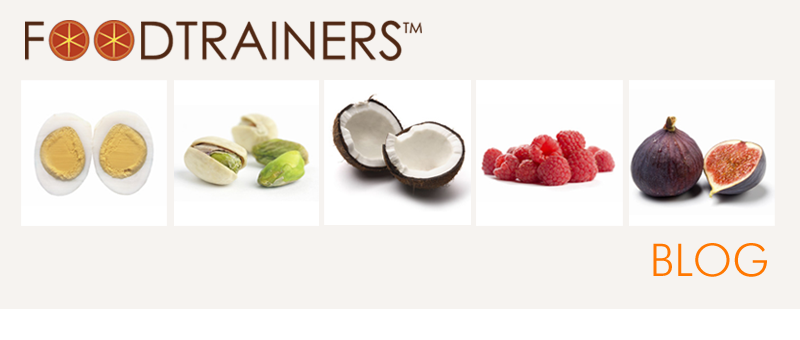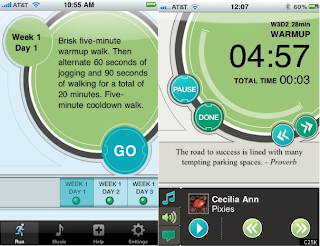If you were to ask me about a foreign-sounding food ingredient there’s a good shot I would be able to tell you what it is. I can also explain which produce is more pesticide-laden and why you shouldn’t be drinking from a plastic water bottle (if you’re using one right now, you’re busted). Until a couple of years ago there was a large discrepancy between my knowledge of what goes in our bodies and that which goes on our bodies. In many ways “green” changes when it comes to food are easier ones. An organic apple simply tastes better. When it comes to body products, some of the more natural choices do not work as well. I test-drove many lotions and potions and thought I’d share my favorite finds. And because I do not consider myself an authority on these products I interviewed two women who are.
I read about Odacite' in a magazine and was taken my Valerie’s story. Valerie was diagnosed with breast cancer and subsequently made many sweeping life changes. She learned that some of the greatest exposure to toxins occurs with our personal care products. Even her expensive French moisturizer was chock full of chemicals. Odacite’s products use only the best, organic ingredients and they are made fresh for each customer. This lotion kept my skin hydrated for the entire ski season last year.
I first tried these products in Sag Harbor at one of my favorite stores Wellnest. This spray is fantastic after you wash your face in the morning and I also use it after hot yoga. Tata Harper’s skincare was founded on the idea “that women no longer need to sacrifice their health to look and feel beautiful.” All of her products are produced on her farm in Vermont.
I’ll admit I feel like a bit of a hypocrite talking about natural hair care. I’m pretty sure what’s making this head blonde is far from organic. I’m not proud of that. Despite the highlights, I was on a mission to ameliorate my chemical exposure. My friend and fellow dietitian Ashley Koff tweeted about Rahua and it caught my attention. I’ll tell you that Rahua isn’t just my favorite organic hair care; it’s the best hair care line I’ve ever used. If only Rahua could make me blonde without bleach, I’d be thrilled.
I don’t wear polish on my nails anymore because it grossed me out when I was cooking. I didn’t want “ballet slippers” in my smoothies or families’ meals. Because my runner’s feet need all the help they can get, I was excited to experiment with Spa Ritual. Spa Ritual’s polishes are free of toluene, formaldehyde and DBP.
Valerie and Tata were kind enough to answer some of my questions. Their answers may help you choose better products.
What are your top 3 evil ingredients when it comes to topical products?
Valerie:
- Parabens- are the most widely used preservatives in personal care products. These synthetic chemicals are hormone disruptors. Medical concern is raised as many studies show that parabens are linked to breast cancer. Studies also show parabens react with the sun and accelerate aging. So if you don’t do it for your health, toss them to avoid wrinkles.
- Fragrance- considered a trade secret manufacturers are not required to list ingredients in formulating their fragrance. Most are synthetic chemicals that can trigger allergies and disrupt hormone levels.
- SLS and SLES (Sodium Lauryl/Laureth Sulphate)- are cheap detergents in many “foaming” cosmetics. They can cause damage to the heart, liver and lungs.
Tata’s top 3: Hydroquinone, Sodium Lauryl Sulfate, Parabens.
Note: hydroquinone is a skin-bleaching chemical that has caused tumor development in animal studies. The National Toxicology program is conducting reproductive toxicity studies of this chemical.
Parabens, according to the European Commission’s Scientific Committee on Consumer products, may cause reproductive and developmental disorders. The following ingredients indicate paraben presence:
methylparaben, ethylparaben, propylparaben, butylparaben, parahydroxybenzoic acid, parahydroxybenzoate. You cannot assume that a product labeled organic or natural is free of parabens some seemingly wholesome brands like Kiehls are paraben parties, sad.
methylparaben, ethylparaben, propylparaben, butylparaben, parahydroxybenzoic acid, parahydroxybenzoate. You cannot assume that a product labeled organic or natural is free of parabens some seemingly wholesome brands like Kiehls are paraben parties, sad.
If someone is just starting to consider what goes “on their body” is there one place or product you would suggest they start?
Valerie: Great question, 60% of what you apply on your skin enters your bloodstream. The EWG showed that women are exposed to 200 chemicals every day from personal care products. I would say whatever you use the most of. Body lotion covers most of your skin. Lipstick would be second as women ingest 32 lbs. of lipstick in a lifetime and most are contaminated with lead. Shampoo and toothpaste are important too.
Tata: I would definitely start with body lotion because as women we generally apply it 2x a day and sometimes more frequently.
And finally, what do you say to people who say organic, chemical free products are too expensive?
Valerie: I say choosing organic is the best long-term investment you can make for yourself, your family and the planet. You can choose to support your local farmer who grows his product with care and integrity, you can choose to purchase from companies that make organic products and say no to chemical business or you can chose to support your MD. In the long term it is a lot less expensive to buy organic because your health is priceless.
Tata: High quality natural and organic ingredients are going to cost more than their synthetic alternatives; but when you think about this carefully natural ingredients are more compatible with our systems and don’t pose the potential health risk of the chemical ingredients so there’s really no comparison.
If you’re new to organic personal care products, start to read ingredients and avoid Valerie and Tata’s “evil 3’s”. And maybe start with one product, as they suggested, the one you use most. We also like Environmental Working Group’s Skin Deep Cosmetic Database, The Detox Market and Spirit Beauty Lounge.
Where do you stand with personal care products? Any natural companies you’d suggest? Are you willing to read product labels or make one organic/natural switch?
*Valerie from Odacite graciously offered to give away 3 of their discovery kits (includes 7 Odacite' products) to our readers. Be sure to leave a comment below in order to be eligible.
And Tata Harper is giving one reader her floral essence (too bad I am ineligible).
*Valerie from Odacite graciously offered to give away 3 of their discovery kits (includes 7 Odacite' products) to our readers. Be sure to leave a comment below in order to be eligible.
And Tata Harper is giving one reader her floral essence (too bad I am ineligible).

































